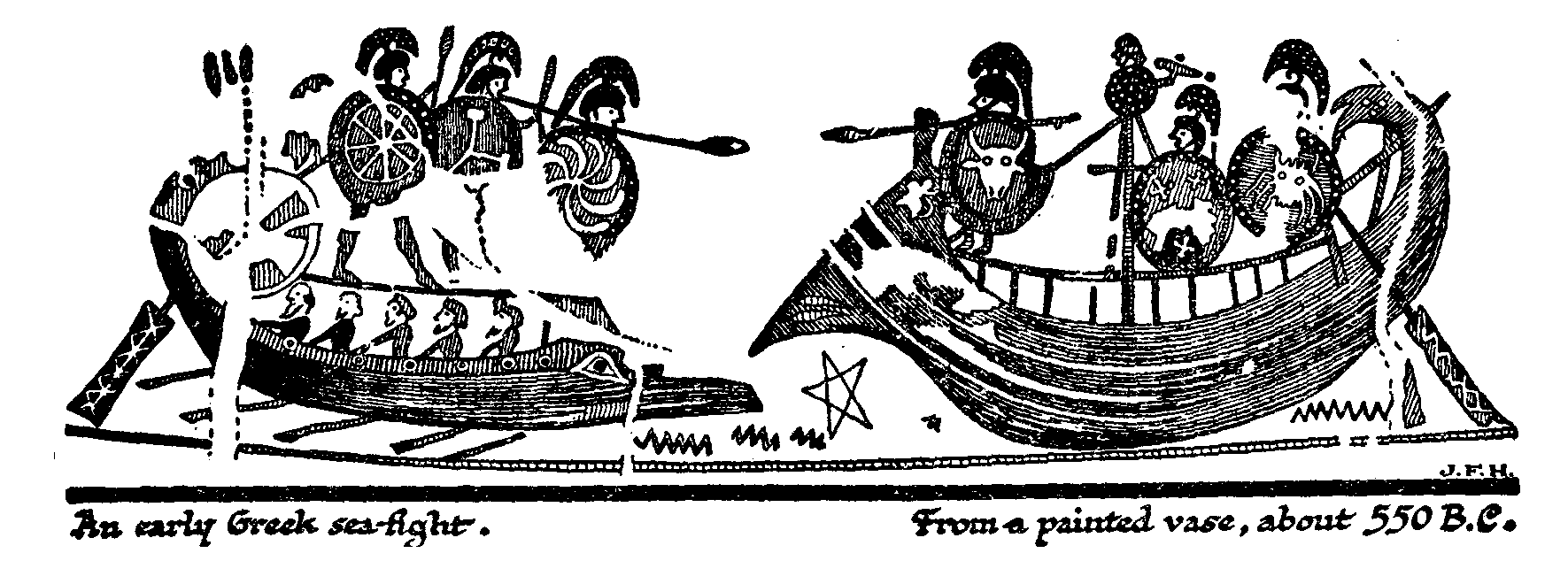« 21.0 The Greeks and the Persians |Contents | 21.2 Distinctive Features of Hellenic Civilization »
21.1 The Hellenic Peoples¶
The Greeks appear in the dim light before the dawn of history (say, 1,500 B.C.) as one of the wandering imperfectly nomadic Aryan peoples who were gradually extending the range of their pasturage southward into the Balkan peninsula and coming into conflict and mixing with that preceding Aegean civilization of which Cnossos was the crown.
In the Homeric poems these Greek tribes speak one common language, and a common tradition upheld by the epic poems keeps them together in a loose unity; they call their various tribes by a common name, Hellenes. They probably came in successive waves. Three main variations of the Ancient Greek speech are distinguished: the Ionic, the Aeolic, and the Doric. There was a great variety of dialects. The Ionians seem to have preceded the other Greeks, and to have mixed very intimately with the civilized peoples they overwhelmed. Racially the people of such cities as Athens and Miletus may have been less Nordic than Mediterranean. The Doric apparently constituted the last most powerful and least civilized wave of the migration. These Hellenic tribes conquered and largely destroyed the Aegean civilization that had preceded their arrival; upon its ashes they built up a civilization of their own. They took to the sea and crossed by way of the islands to Asia Minor; and, sailing through the Dardanelles and Bosphorus, spread their settlements along the south, and presently along the north borders of the Black Sea. They spread also over the south of Italy, which was called at last Magna Graecia, and round the northern coast of the Mediterranean. They founded the town of Marseilles on the site of an earlier Phoenician colony. They began settlements in Sicily in rivalry with the Carthaginians as early as 735 B.C.
In the rear of the Greeks proper came the kindred Macedonians, and Thracians; on their left wing, the Phrygians crossed by the Bosphorus into Asia Minor.
We find all this distribution of the Greeks effected before the beginnings of written history. By the seventh century B.C. – that is to say, by the time of the Babylonian captivity of the Jews–the landmarks of the ancient world of the pre-Hellenic civilization in Europe have been obliterated. Tiryns and Cnossos are unimportant sites; Mycenae and Troy survive in legend; the great cities of this new Greek world are Athens, Sparta (the capital of Lacedemon), Corinth, Thebes, Samos, Miletus. The world our grandfathers called «Ancient Greece» had arisen on the forgotten ruins of a still more Ancient Greece, in many ways as civilized and artistic, of which today we are only beginning to learn through the labours of the excavator. But the newer Ancient Greece, of which we are now telling, still lives vividly in the imaginations and institutions of men because it spoke a beautiful and most expressive Aryan tongue akin to our own, and because it had taken over the Mediterranean alphabet and perfected it by the addition of vowels, so that reading and writing were now easy arts to learn and practise, and great numbers of people could master them and make a record for later ages.[1]
| [1] | Vowels were less necessary for the expression of a Semitic language. In the early Semitic alphabets only A, I, and U were provided with symbols, but for such a language as Greek, in which many of the inflectional endings are vowels, a variety of vowel signs was indispensable. |
« 21.0 The Greeks and the Persians |Contents | 21.2 Distinctive Features of Hellenic Civilization »
comments powered by Disqus
